The Most Underrated Tales of Poe (Part 2 of 3): 10 Best, Forgotten Black Humor Stories
- Michael Kellermeyer
- Jul 21, 2021
- 8 min read
Updated: Oct 27, 2021
In this three-part series we will explore the forgotten tales of Poe: stories of Gothic horror, black humor, and fantasy/suspense that are often overlooked (even at times by stalwart fans of his writing). Ever since he rose to literary prominence in the 1830s and 1840s, Edgar Allan Poe's body of work has always been noted for its stand-out fan favorites: "Usher," "Amontillado," "Tell-Tale Heart," "Pit and the Pendulum," "Masque of the Red Death," and "The Black Cat." Some might toss in there "A Descent into a Maelstrom," "Ligeia," "Murders in the Rue Morgue," or "The Gold-Bug," but the majority of Poe's readers rarely venture beyond these unquestionably powerful pieces.
There is no doubt that they have earned their place, and there is little wonder why others have not enjoyed the same celebrity: naturally, "The Fall of the House of Usher" and "The Cask of Amontillado" are going to more easily draw in readers and linger in their imaginations than, say, "Landor's Cottage" or "X-ing a Paragrab." However, some of his lesser-known works are stunningly unique and chilling when you actually sit down with them, and will easily make you wonder why they don't enjoy wider acclaim. Some, of course, lack this because they have genuine problems with their structure, pacing, or overall conception, and are undeniably held back by weaknesses, but even those featured in this series with such deficiencies make up for it with some other strength (usually mood, creativity, or sheer creepiness). So, without further ado, let's plunge into the second part of our exploration of Poe's tales: ten of his most underrated tales of black humor...
10. THE MAN THAT WAS USED UP

In a bizarre tale, seemingly relevant to our own world of blustery news stories and bombastic public figures, Poe's narrator is a reporter eager to interview an enigmatic American general whose reputation as a war hero and statesman has ballooned to suspiciously immense proportions. Famous for having brutally fought two tribes of Native Americans (who had once captured and tortured him quite badly), he is equally well known for his powerful frame, flowing black hair, and gleaming eyes. When the reporter finally nabs an interview he walks into the general's room to the sound of his famously booming voice, but is surprised to see nothing but a pile of clothes and -- something else, seemingly -- cluttered in a corner. It is then that the absurd horror of the reality strikes him, just as the general's servant begins to assemble the hideously dismembered statesman from the stack of prostheses on the floor...
9. THE SPECTACLES
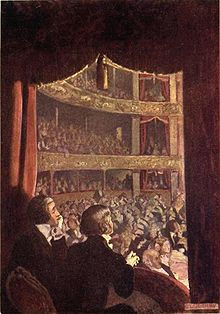
This snarky comedy does indeed begin on a fairly dark, alluring note (much like "The Assignation" or Washington Irving's "The Adventure of the German Student," to which this is an homage) filled with Continental glamor, romance, danger, intrigue, and mystery. A vain, social climbing Frenchman is at the opera when he spies a beautiful face in a box across from him using opera glasses, and falls in love immediately. His friend recognizes the woman as a wealthy widow and arranges an introduction. The young man is horribly nearsighted, however, and woos, courts, and becomes afianced to the lady without ever again being able to clearly see her face. He agrees, however, that he will don glasses on their wedding night. The wedding goes through, and he meets his bride in their bedchamber where he dons his spectacles. To his horror, she has completely transformed into a hideous, toothless old crone, and is mortified. The solution almost smacks of one of Dupin's mysteries -- watered down with some harmless farce and a bit of Schadenfreude -- but is still a memorable read...
8. THE ANGEL OF THE ODD
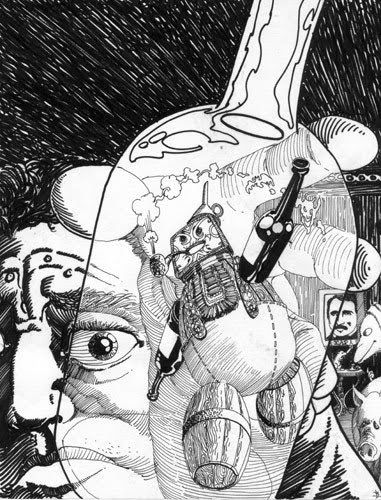
In a tale that presages some of Charles Dickens' lighter ghost stories, an arrogant cynic scoffs at reading of the death of a man who swallowed a needle -- a story he considers a hoax -- but is almost instantly introduced to a phantom made of kegs and wine bottles who declares himself to be the Angel of the Odd: the creature responsible for all such hoaxes. He still disbelieves what he is told, but this is clearly to his detriment, because his life is suddenly beset by a series of unfortunate events: his house burns down, he is knocked off a ladder by a hog, and he is tripped up while trying to woo two beautiful women. Depressed, he decides to drown himself, but as he strips for his final swim, a cow runs off with his underwear and he gives chase, falls off a cliff, is saved by a hot air balloon, and comes face to face -- once again -- with the leering Angel of the Odd...
7. THE DUC D'OMELLETTE

This bit of dark humor follows the eponymous French duke -- an arrogant and pretentious caricature -- as he has a stroke while eating dinner and wakes up in a room in hell. It is a strange setting, complete with a ceiling made of fiery, swirling clouds and excellent works of art hanging on the walls. Satan greets him and commands him to strip. Disinclined to this humiliation, he challenges the Devil to fence with him in exchange for his life, but Satan instead suggests a game of cards. The duke delightfully agrees to this because -- like Satan -- he is a great cheater. And so the game begins...
6. BON-BON
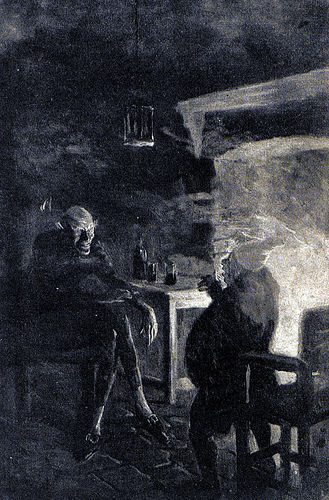
Yet another pretentious Frenchman, Chef Bon-Bon is an acclaimed restauranteur famous for his omelettes and a belief in the superantural (not to mention a great taste for alcohol). Like his countryman, the duke, he encounters the devil one wintry night (wearing a black suit and green-colored glasses). Satan has come to discuss metaphysics with the chef and to suggest some ways that he can further increase his fame. Soon Bon-Bon realizes that the devil is blind (hence the glasses) but that his vision is sharper than any seeing person's ("my vision," Satan says, "is the soul"). The two men begin to drink heavily and Satan -- whose preferred delicacy is the human soul -- begins to critique the flavor of the souls of famous men which he has eaten. This begins to concern poor Bon-Bon, as he suspects that tonight it is his soul which is on the menu, and he begins to use his own drunkenness to his advantage...
5. THE DEVIL IN THE BELFRY

After taking the piss out of the French so often, Poe turns his guns on the Dutch, depicting the odd city of Vondervotteimittiss ("Wonder what time it is?") where the residents are obsessed with time and punctuality (along with an adoration of cabbage). Modeled after Washington Irving's satiric "History of New-York," it lampoons the Dutch townspeople as superficial, silly, bombastic, and easily upset. They are royally thrown aback, however, one day when a Satanic figure appears with a fiddle in hand and takes up residence in their belltower. There he attacks the time keeper and makes the bells ring thirteen o'clock, which causes everyone -- even the cabbages -- to devolve into rage and chaos...
4. SOME WORDS WITH A MUMMY
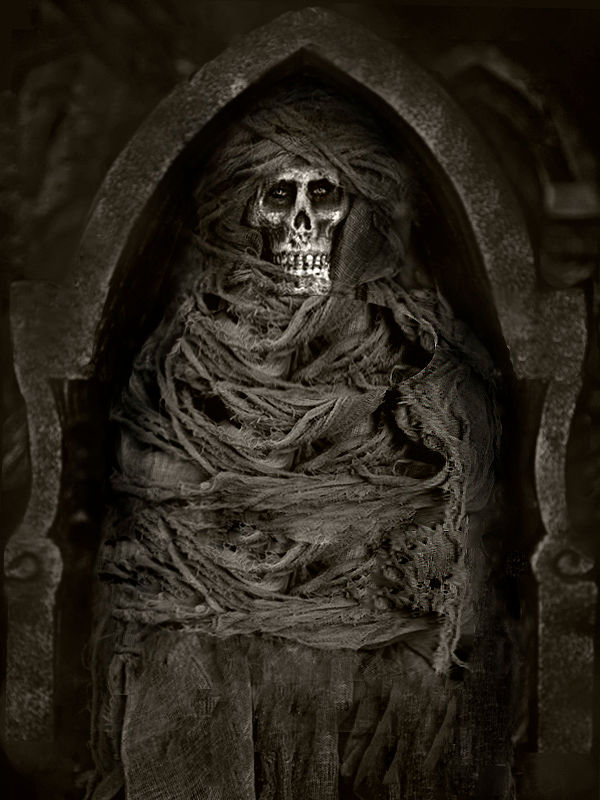
In one of the very, very first stories involving a reanimated mummy a group of scientists eagerly bring an Egyptian mummy back to life. The first "evil reanimated mummy" wouldn't appear until Poe's disciple, Arthur Conan Doyle, wrote his brilliant "Lot No. 249" -- not a Sherlock Holmes story, but definitely a supernatural thriller. This story is not scary in the slightest (a cavaet that many horror anthologies from the 1960s - 1990s failed to provide: it was often a popular inclusion alongside the far creepier "The Judge's House" and "The Body-Snatcher"). It is, however, brutally humorous, as the modern men try in vain to impress the Egyptian with the progress of human civilization. The urbane, stoic corpse is completely bored (and even scandalized) by their supposed accomplishments, often considering them gauche, trite, or redundant. But the moderns have one ace up their sleeve, and when they reveal it to the mummy, it's enough to send him slumping back into eternal slumber...
3. NEVER BET THE DEVIL YOUR HEAD
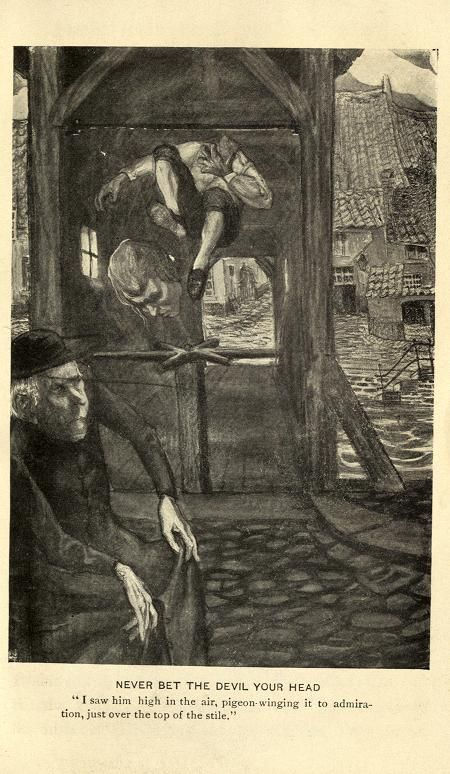
One final "Satanic" story -- a motif clearly adored by Poe, especially for humorous purposes. And this one definitely delivers on black humor. The tale follows the hard-living, vice-ridden Toby Dammit who delights in making over the top rhetorical bets, especially the retort "I'll bet the devil my head!" One day he is riding on horseback with a friend when they come through a gloomy woods and find themselves facing a covered bridge steeped in shadow. It spooks his friend, but Dammit decides to cross it. Halfway through, they encounter a turnstile errected to keep travelers out. Intrigued, Dammit bets the devil his head that he can jump it on his horse. Suddenly, a sound in the shadows calls to their attention a little old man who goads Dammit on and shows interest in the outcome of the stunt. Dammit takes a running start, and successfully leaps the turnstile, but something falls to the ground just below a sharp, iron bar overhead that they hadn't noticed in the gloom, and the little man rushes to retrieve it and disappears. Clearly this is yet another debt owed by Poe to Washington Irving (I hardly need mention which story!)
2. THE SPHINX
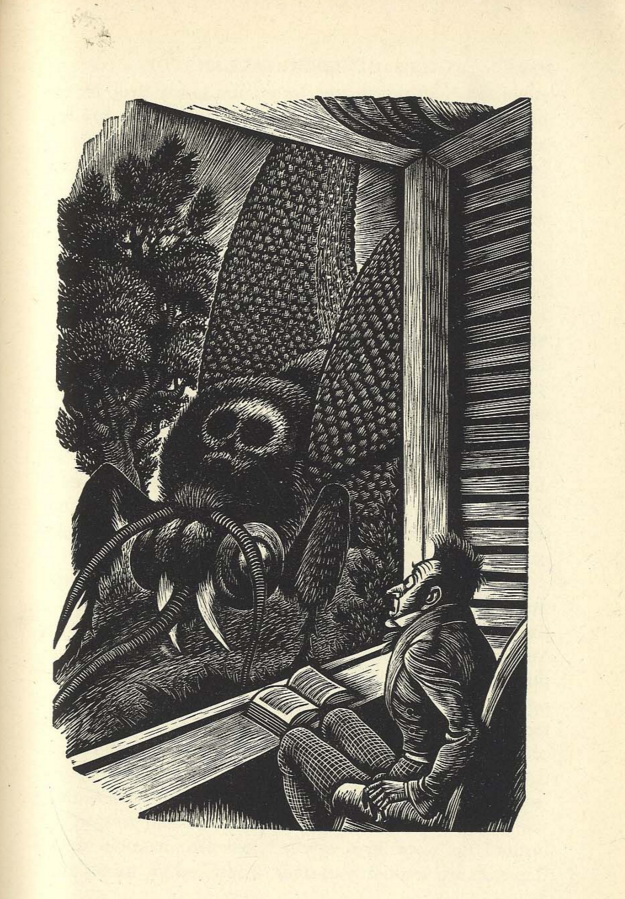
A favorite of mine, this little tale follows a man who has fled New York during one of the many waves of cholera that decimated the city during the muggy summers of the early 19th century. He finds safety in a friend's house upstate on the banks of the Hudson, where they sadly read the papers and see the names of their recently dead friends being reported. Depressed, he spends time sitting in a chair by a window and watching the river. But one day, at sunset, he is mortified to see what he imagines to be the living embodiment of death itself crawling up the wooded hills of the Hudson: a wriggling monster the size of a battleship, complete with flaming wings, a black furry hide stamped with a skull, and an otherworldly shriek like a banshee. The vision troubles him deeply, and although his Holmesian friend immediately thinks of a more prosaic solution, it is still a disturbing little study on mortality...
5. THE SYSTEM OF DOCTOR TARR AND PROFESSOR FETHER
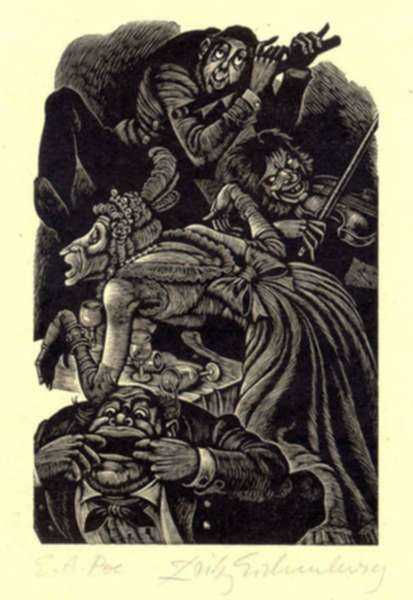
Unquestionably Poe's most famous tale of dark humor, this blistering satire -- a literary classic in its own right -- follows a pair of men who visit a mental assylum where a revolutionary new psychiatric proceedure is being practiced -- the so-called "system of soothing." One of the men, who knows, Maillard, the psychiatrist who invented the system, introduces his friend to the wardens and departs. Shortly after his tour begins, the narrator is stunned to learn that the system -- which had been so wildly lauded -- has just recently been rejected. Maillard admits that this is true, and as they enter the assylum, he warns him to "believe nothing you hear, and only one half that you see". Confused, he finds himself invited to a diner where other guests greet one another and enjoy a lavish meal. The narrator is somewhat put off, however, by the other guests' behavior and manners, which he finds odd and uncouth. They begin discussing the patients they have each met and the new system that has found so much success -- that designed by Dr. Tarr and Prof. Fether -- which Maillard explains took precedence after a shocking incident: the inmates were granted too much freedom by the soothing system, and eventually overtook the asylum, locking up the staff and turning the tables completely. The former patients elected a leader who claimed to know a much better method for curing insanity (that of Tarr and Fether), part of which involved never allowing any visitors into the asylum -- except, he says, "for a very stupid-looking young gentleman of whom he had no reason to be afraid." At this point, of course, the narrator begins to feel very, very nervous and notices that all eyes are on him...





